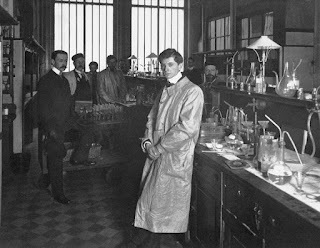Let’s get recovery right.
Recovery is a process, not a thing. A process (like learning), not a thing (like a diploma).
Recovery is experienced, like jumping in a pool is experienced, like driving a car is experienced, like washing your face is experienced, like hanging out with friends or praying is experienced. Recovery is the experience of making decisions, learning from successes and mistakes, asserting control, making progress. Living meaningfully.
In the world of sobriety, recovery is doing what it takes to avoid that next drink. In the world of mental health, recovery is coming to terms with the world, finding strengths, figuring out what helps, confronting limitations, handling risks.
If recovery were a thing, clinical systems could be optimized to deliver it. People could buy it, hang it on their wall. Institutions could control it, install it in people, restrict access to it, audit its functioning, tinker with it, put it in a can. These days, we would see it branded, with a social media onslaught and offbeat commercials.
But no one can deliver recovery.
If recovery were a thing, it might get written up into a technique. But as soon as an experience or process becomes a technique, people start quibbling about whether the technique adequately embodies the process, and about the wording of the instructions that go with it. Technique-users who go through the motions would have the experience of following instructions. Would technique-users find recovery? Maybe sometimes.
Mental health recovery as a concept (note: a concept is a thing) started as a revolution, a liberation movement from institutionalization. Institutionalization steals people’s decision-making capacity. It is inherently coercive. Inmates are controlled. That’s the whole point of living locked down, observed 24/7, shackled, restrained, the usual process through the 1960s, 1970s, some places even today. Recovery showed up as the process of getting power back. The context of institutionalization may offer some historical context, but is now understood to be optional.
A person can experience recovery no matter what the starting point.
Recovery is people achieving success, the way that works for them.
Institutions have trouble understanding recovery because they are optimized to deliver things. Clinical things. Technical processes accumulate around those things. People test for consistency in delivery. Institutions have outcomes, logic models, levels of expertise, formality, rules, committees. People in the process of recovery may or may not have any of that.
An institution that is truly recovery-oriented is more like a hair salon than a hospital. Do we ask hair salons to report on the amount and quality of beauty they delivered in the course of the last month? Hair salons have licensed experts and techniques. They try to deliver positive experiences. Many of the objects and materials in hair salons are sharp or toxic, so there are rules people follow, and procedures that make the visit safe for the customer. Big deal. When customers show up, they follow the rules, and often they get what they want. Not just the haircut, but the experience of it, and even more important, the experience that follows. A compliment, a feeling of confidence, a second date, a job.
During Recovery Month, look for people experiencing the process of recovery. What do you see going on? It's always a process, never a thing,
---
I learned this notion, that processes are not things, from Dominic Barter, in the course of a conference call this past week.


